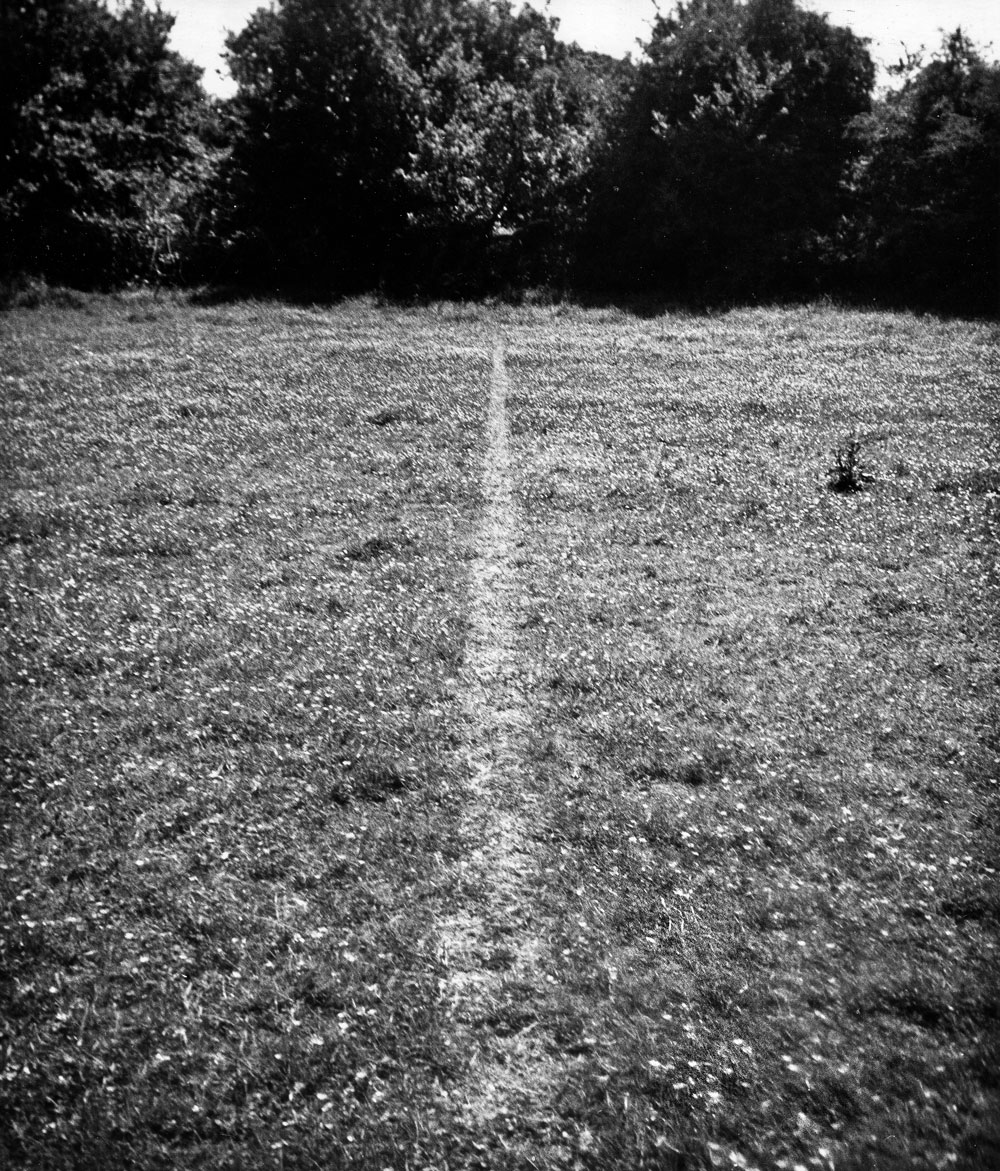In my first assignment I created images which I believed didn’t represent the experience of the landscape, though they met with the established definitions. For me the experiences came in visiting those locations, in wandering to the points from which I would photograph. In contrast, for my final assignment of I&P I attempted to visualise my place in the landscapes through which I walked. On holiday recently I went back to my usual methods, I simply took pictures as I walked (see here). Walking and photography are my two passions.
When researching for part two of the course I came across the description “walking artist”, applied specifically to Hamish Fulton and Richard Long. The work of the latter in particular really inspires me, and I feel like I may have found a home. I don’t think of myself as a landscape photographer, for me the implications of that lie too much within the traditions I questioned in part one. I certainly don’t think of myself as a documentary photographer or a street photographer, though the relationship between people and their environment is very much of interest to me. But I feel like I could comfortably describe myself as a “walking artist”, someone whose practice revolves around the experience of walking and the issues that present themselves to me as I wander. Whilst nomenclature is largely irrelevant to the making of art, I think that having a hook on which to hang my work will give me more confidence to develop what I am doing. As Fulton himself says: “With walking, you enter an uncharted world, because if you say you want to make art about walking, then it’s wide open – it’s not like abstract painting, which has a history“. (1)
It is Fulton’s work which really epitomises the concept of a “walking artist”, in that he commits himself entirely to walking, the walk is in some senses a piece of performance art, although the tangible art appears in the form of photographs, line drawings and text based pieces (more on the text aspects to follow). I confess I find his work challenging, the text pieces are interesting but the photographs give me little insight into his experiences while walking.
Richard Long’s work is to me more engaging. It is primarily sculptural, though immortalised through photography (like Fulton he also uses text based work). He creates a trace of his presence in the landscape, whether through trampling grass or mud, or rearranging stones. It is not sculpture on a grand scale, nor intervention which could be destructive, it is simply leaving a mark of his presence which will be quickly wiped out by other natural or mandmade forces.

“A Line Made by Walking” (1967)
The majority of Long’s photographic work incorporates circles or lines. The latter reminds me immediately of footpaths, of my own images of walking along marked out paths. Long’s lines are not paths made by others, but paths of his own making, his personal interaction with the landscape. It reminds me of footprints in the snow, that image we all love to make on waking up to a fresh white carpet. I think it is an act of control, of being the first to enjoy a landscape (even if we know we are not in fact the first). By leaving a mark we become a part of the landscape if only for a short time.
The straight line is also indicative of a journey, it takes us literally and metaphorically into the picture and therefore into the landscape. In contrast Long’s circles take us nowhere; a circle has no beginning or end. However the circles feel very natural, like the sun, a flower or a pebble on the beach it is a very natural shape. It also has historic echoes – from pagan stone circles to the stone waymarkers left on mountains. The circles are somehow both out of place and entirely comfortable in their surroundings, just as Long in his act of walking is a part of the landscape and simultaneously separate from it.
When I photograph the landscape on my walks I am often drawn to traces of human presence; rubbish, signs, benches. What I fail to notice is my own presence in the landscape. My final assignment of I&P was a first attempt to address this, but I think there is far more to explore. I don’t want to emulate Fulton or Long, but I feel very comfortable being in their presence an I am inspired to work more with my own experiences of walking.
EDIT 25/7/17: Note also Paul Gaffney’s “We Make the Path by Walking” – pure photography rather than land art but fits within the concept of a walking artist. See notes here.
Feature image: taken whilst walking in the Highlands for my 30th birthday, 2011
(1) Quoted: http://www.telegraph.co.uk/culture/art/art-features/9014354/Hamish-Fulton-wanders-the-neural-pathways.html (accessed 20th July 2017)